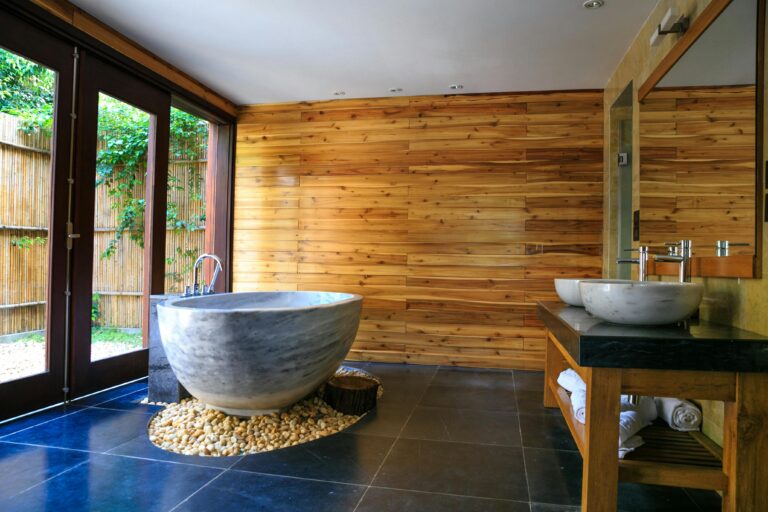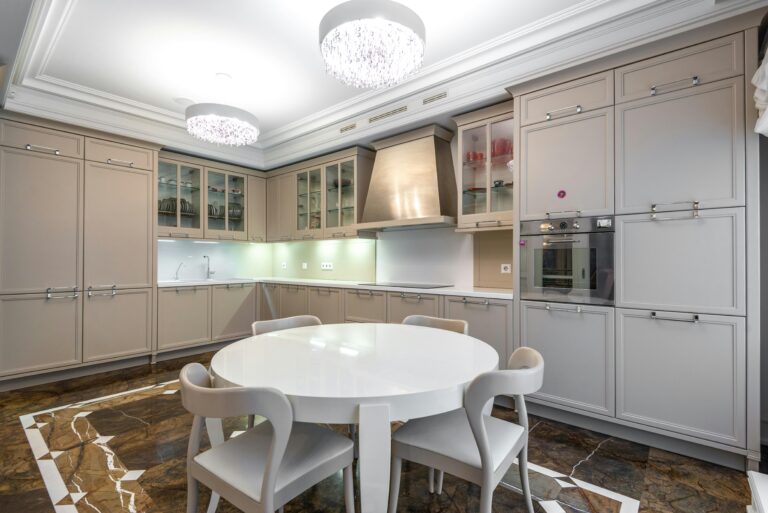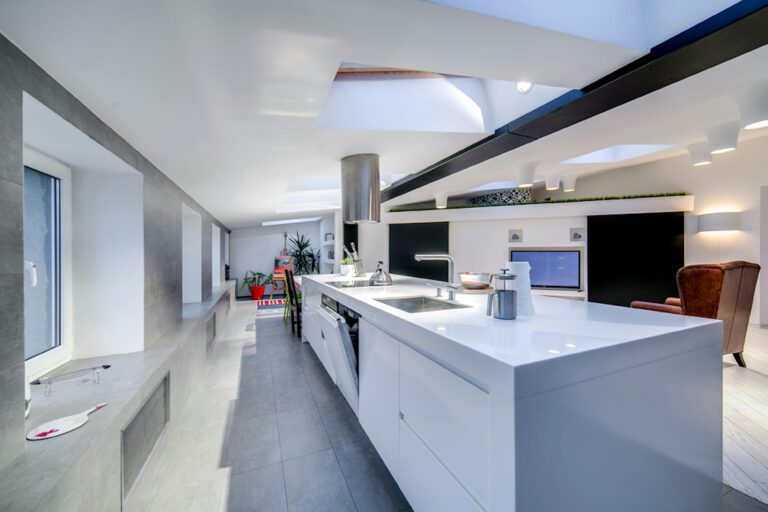The library should be the crown jewel of intellectual luxury, yet most homeowners settle for generic bookshelves pushed against bare walls. In 2025, discerning homeowners are discovering what visionary designers have known for decades: a truly transformative reading space requires far more than beautiful books and comfortable seating. The most sophisticated homes now feature libraries that function as multi-sensory intellectual sanctuaries, where every design element serves both aesthetic beauty and cognitive enhancement. These aren’t just rooms with books—they’re carefully orchestrated environments that elevate the entire experience of learning, thinking, and contemplation into something transcendent.

This Photo was taken by Rachel Claire.
The neuroscience behind transformative reading environments
Leading designers in 2025 understand that creating an exceptional library requires more than aesthetic intuition—it demands scientific understanding of how our brains respond to different environmental stimuli. Recent studies from Stanford’s Environmental Psychology Lab reveal that reading comprehension increases by 23% in spaces with optimal lighting ratios, while retention improves by 31% when surrounded by natural materials and textures.
The most successful library transformations begin with what experts call “cognitive zoning”—the strategic arrangement of different areas to support various intellectual activities. Strategic lighting design plays a crucial role here, with designers implementing layered illumination systems that adapt to different reading scenarios throughout the day.
| Environmental Factor | Cognitive Impact | Design Implementation |
|---|---|---|
| Natural Light Integration | 15% increase in focus duration | Automated skylights and light wells |
| Acoustic Optimization | 28% better concentration | Sound-absorbing materials and white noise systems |
| Temperature Zones | 19% improved reading stamina | Micro-climate control per seating area |
| Biophilic Elements | 22% stress reduction | Living walls and natural material integration |
Visionary designers leverage this research by creating what they call “intellectual micro-climates”—distinct zones within the library that cater to different cognitive states. The contemplation corner features warmer lighting and softer textures, while the research station incorporates cooler, brighter illumination with ergonomic task lighting.
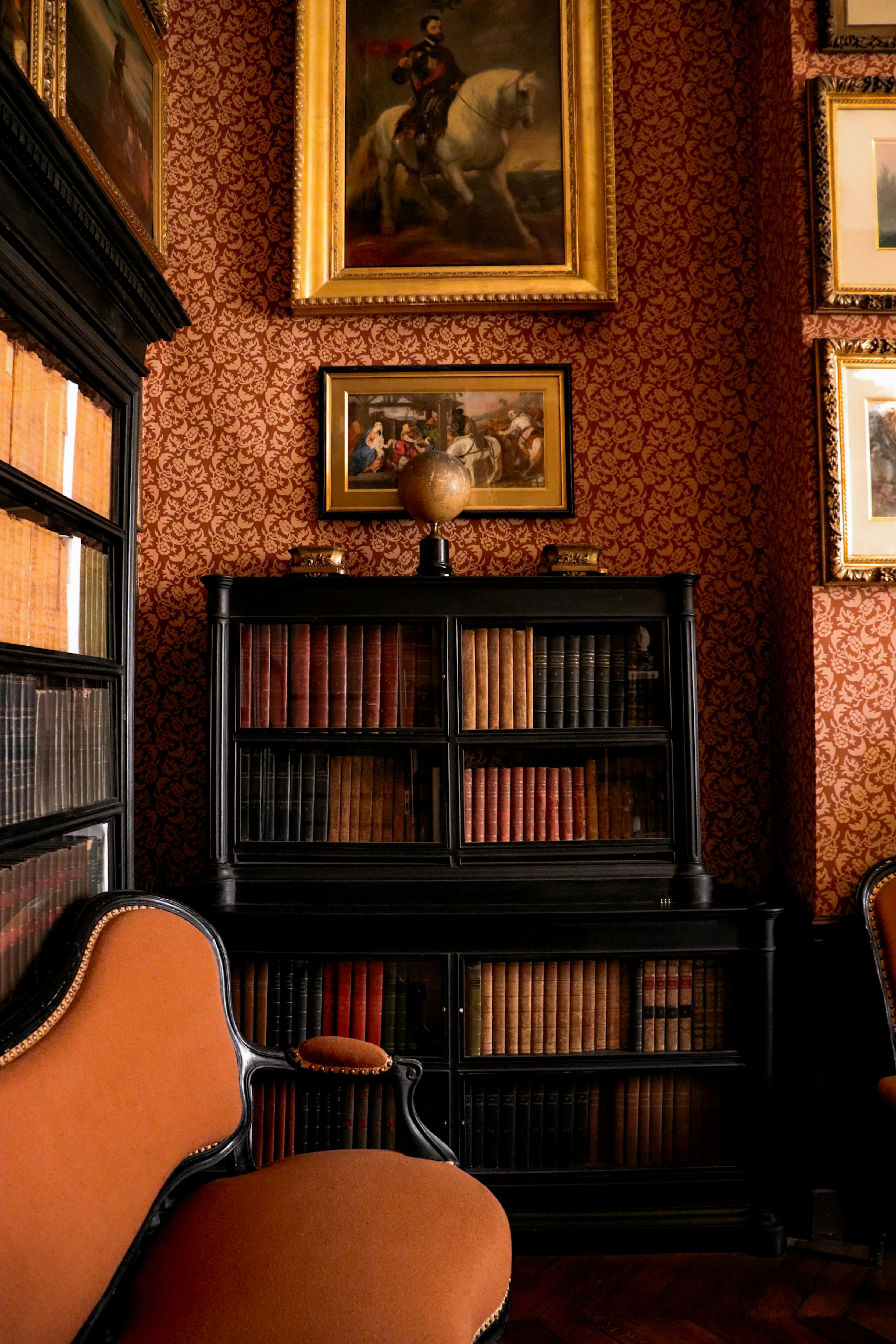
This Photo was taken by Céline |.
Architectural storytelling through spatial design
The most compelling library transformations in 2025 embrace what leading designers call “narrative architecture”—the art of using spatial design to tell a story about knowledge, discovery, and intellectual growth. Rather than simply housing books, these spaces create an experiential journey that begins the moment you cross the threshold.
This approach to storytelling through design manifests in several innovative ways. Progressive revelation, where books and artifacts are discovered gradually as you move through the space, creates a sense of intellectual adventure. Height variation, with reading nooks positioned at different elevations, establishes a hierarchy of contemplation that mirrors the depth of knowledge itself.
The psychology of vertical design
Floor-to-ceiling bookshelves serve more than storage—they create what environmental psychologists call “vertical aspiration,” a subconscious motivation to reach higher levels of understanding. The most sophisticated 2025 libraries incorporate rolling ladders, hidden staircases, and even pneumatic lifts that transform the act of book selection into a ritual of intellectual exploration.
Smart integration plays a crucial role here, with intelligent design systems that can locate specific books through discrete LED pathways, while maintaining the room’s timeless aesthetic appeal.
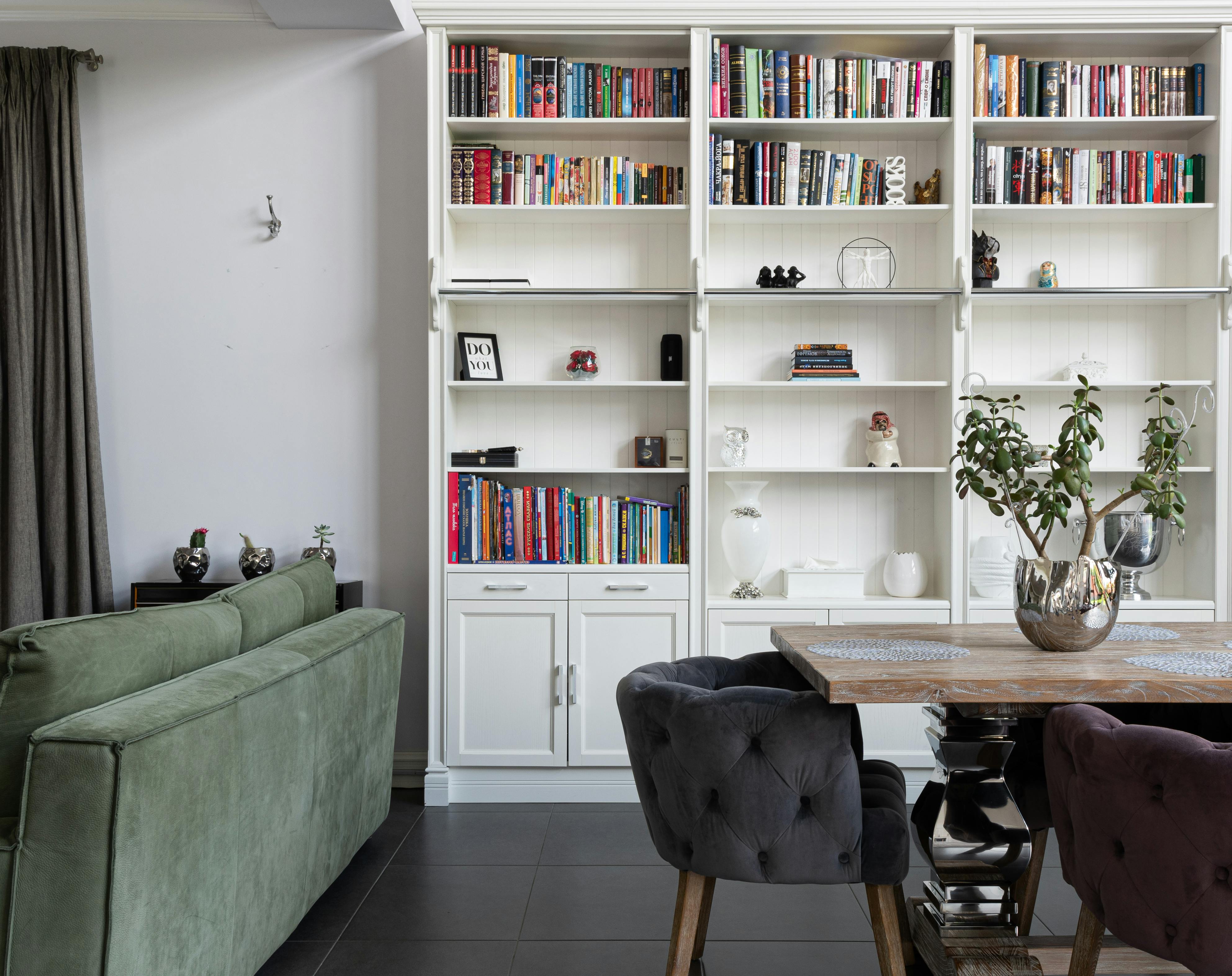
This Photo was taken by Max Vakhtbovycn.
Material selection for intellectual luxury
The tactile experience of a luxury library extends far beyond the books themselves. Visionary designers understand that material selection creates intellectual luxury through subtle sensory engagement that enhances focus and contemplation.
The 2025 approach to library materials focuses on what designers call “cognitive comfort”—surfaces and textures that unconsciously support mental clarity. Reclaimed teak and aged oak provide warmth and grounding, while brass accents and leather details create tactile anchors that help maintain focus during extended reading sessions.
The science of texture and cognition
Recent research from the Harvard School of Design reveals that readers in environments with varied natural textures show 34% better long-term retention compared to those in sterile, uniform spaces. This finding has revolutionized how designers approach surface selection in luxury libraries.
Stone elements, particularly honed marble and travertine, provide visual weight and permanence that subconsciously reinforces the gravitas of knowledge. Meanwhile, soft furnishings in natural fibers—linen, wool, and silk—create comfort zones that invite extended intellectual engagement.
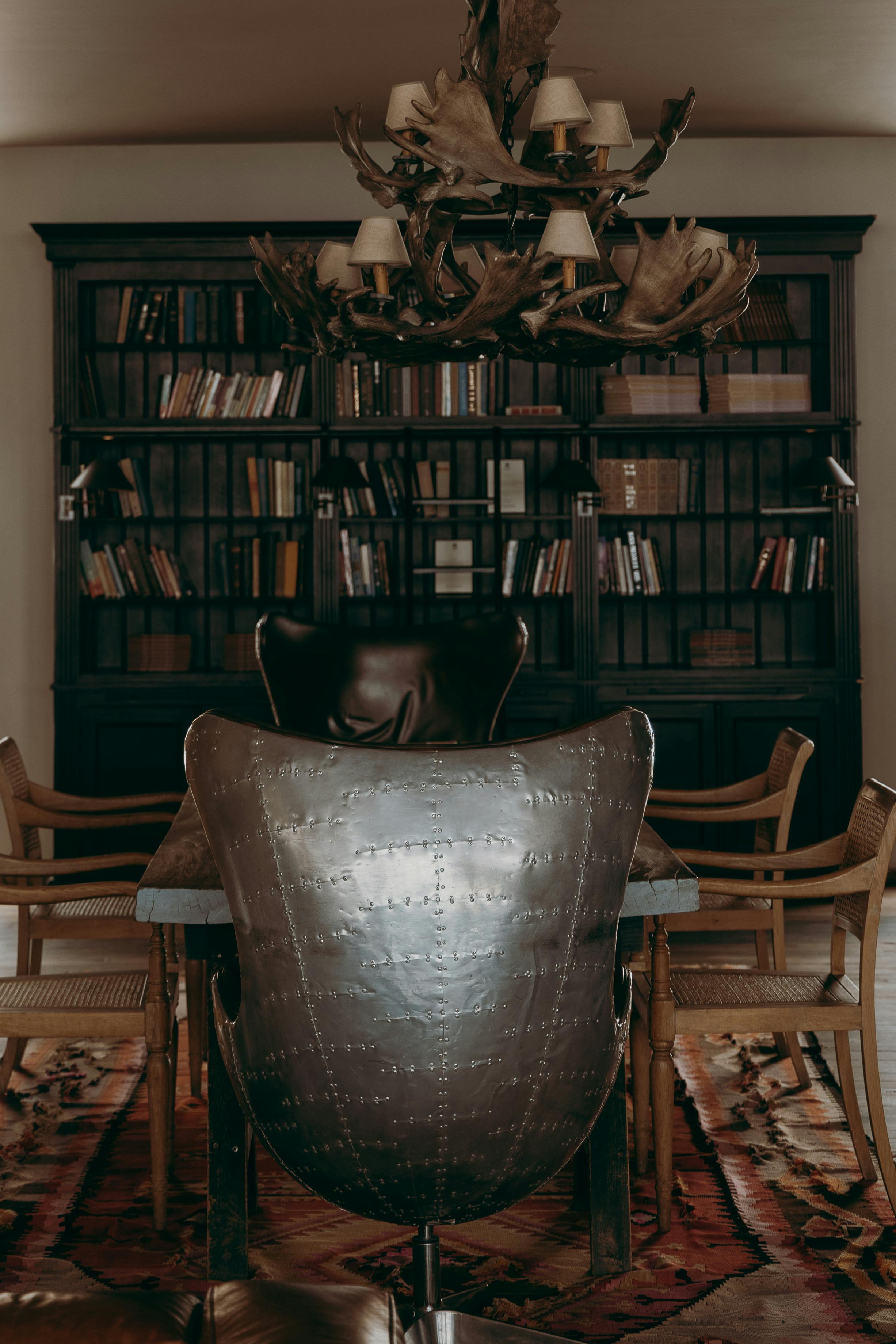
This Photo was taken by ROMAN ODINTSOV.
Technology integration that enhances rather than distracts
The most successful library transformations in 2025 achieve seamless technology integration that amplifies the intellectual experience without disrupting the contemplative atmosphere. Hidden charging stations, invisible speakers, and climate control systems operate silently in the background, while smart glass windows can transform from transparent to opaque based on reading preferences and time of day.
Digital catalog systems, discreetly embedded in furniture surfaces, allow residents to locate books instantly while maintaining the room’s analog aesthetic. Advanced air purification systems, calibrated specifically for paper and leather preservation, ensure that both books and occupants breathe easily.
The invisible infrastructure of intellectual luxury
The most sophisticated libraries feature what designers call “ghost technology”—systems so seamlessly integrated they become invisible. Radiant floor heating maintains optimal comfort without disturbing air circulation patterns. Automated humidity control preserves valuable books while creating the ideal atmosphere for extended reading sessions.
Voice-activated research assistance, accessible through nearly invisible interfaces, can provide instant access to supplementary information without requiring residents to leave their contemplative state. This technological sophistication mirrors the approach found in other luxury home transformations where technology serves experience
